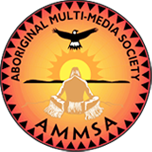Article Origin
Volume
Issue
Year
Page 1
Aboriginal people with disabilities are having problems finding and receiving the services they are entitled to, states a report released in January by the Saskatchewan Institute of Public Policy (SIIP).
The report, Aboriginal People with Disabilities: A Vacuum in Public Policy, contains the results of a two-year study on the issues faced in Canada by Aboriginal people with disabilities. The study involved gathering information from Aboriginal people with disabilities and from professionals responsible for providing services to people with disabilities, as well as a review of previous research on the subject. Two First Nations women with disabilities were part of the research team.
Dr. Doug Durst, a senior policy fellow with the SIIP and a professor of social work at the University of Regina, was one of the authors of the report.
Durst said the idea of undertaking the research project grew out of the lack of research that has been done looking at Aboriginal people with disabilities.
"I noticed that there was quite a bit of research on Aboriginal people, and there was quite a bit of research on people with disabilities. But there was very, very little that actually brings the two topics together and the issues together," Durst said.
The number of Aboriginal people with disabilities is more than twice the rate of the Canadian population as a whole, the report points out, yet the level of services provided to Aboriginal people continues to lag behind those offered to their non-Aboriginal counterparts.
One of the main factors keeping Aboriginal people with disabilities from receiving the supports and services they need is that these people often fall into a jurisdictional limbo, Durst explained.
Aboriginal people with disabilities living in First Nations communities are often forced to leave their communities and move to larger centres in order to access the services they need, he said. But in order to get funding for the services, the person will often have to apply to their band for that funding.
"The band perspective is if a person has a disability and doesn't live in the band ... they're not a priority," Durst said. "Certain kinds of programs and services for maybe somebody who hasn't lived on reserve for many, many years, they don't feel well-connected to them and obligated to follow through."
The issue is further complicated by the confusion over which level of government is responsible for providing services, Durst said. While provision of these services for the general population is mainly a provincial responsibility, providing services for Aboriginal people with disabilities is a federal obligation. This creates what the report refers to as a "ping-pong" treatment of people seeking services.
"Provincial government programs are reluctant to become involved and refer these patients to the federal agency: Medical Services refers to the band government. The band administrators hold an "out of sight, out of mind" attitude and refer to provincial programs," the report states.
Another problem is that, while service providers and professionals who took part in the study said any and all groups were welcome to access their services, including Aboriginal people with disabilities, very few attempts were made to include Aboriginal people in the provision of those services, Durst said.
"If seven, eight per cent of the population of the city is of Aboriginal background, and since Aboriginal people have disabilities at twice the national average, you would think that 14 to 16 per cent of their clients should be Aboriginal. But they're not," he said.
"The thing is, because of the complexity of the needs, I don't think you can really set up a parallel Aboriginal health care system ... so we have to work with some of these groups and put pressure on them, encourage them, increase their awareness. And that's what this report is, is to increase these people's awareness and sensitivity t these issues.
The report recommends that an intergovernmental review team be created to find solutions to jurisdictional problems. The team would have representation from federal and provincial level organizations, Aboriginal people with disabilities and community-based professionals who are providing the services.
It also suggests that organizations mandated to provide services to Aboriginal people with disabilities take steps to increase the number of Aboriginal people accessing the services by examining their policies and programs to identify any discriminatory practices, and by involving more Aboriginal people in service provision.
The report also recommends each province create an ombudsman or advocacy office for Aboriginal people with disabilities to help ensure they receive the services and supports to which they are entitled.
While all these recommendations will help address the problem, Doug Durst said, the people needing the services will have to advocate on their own behalf.
"In the non-Aboriginal community, people with disabilities have become more and more vocal. They're standing up, they're getting services, they're demanding things. And I think we're going to see that over the next decades among Aboriginal people with disabilities. They're going to get more vocal, and then you'll start to see changes."
- 1389 views
